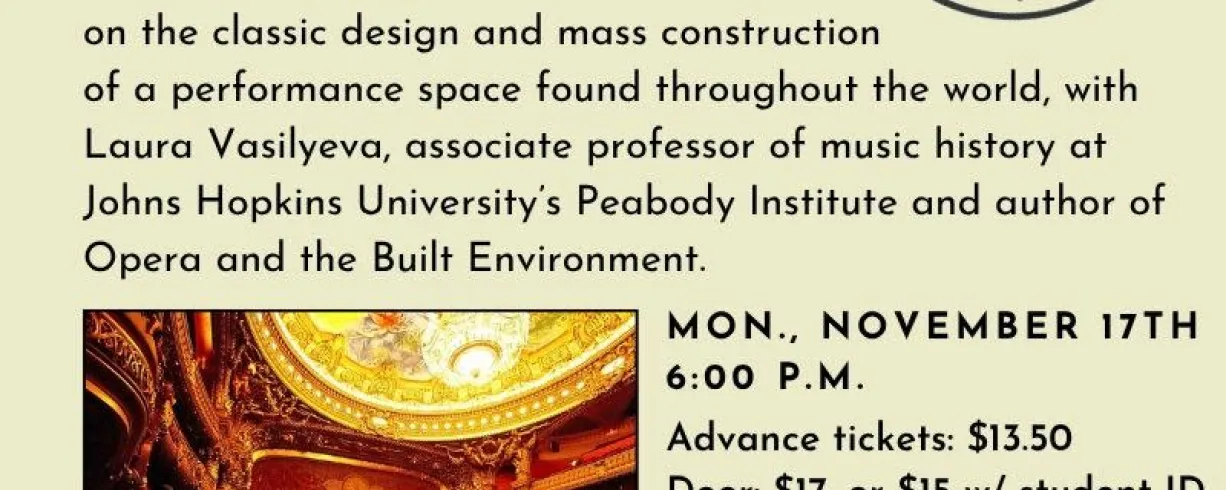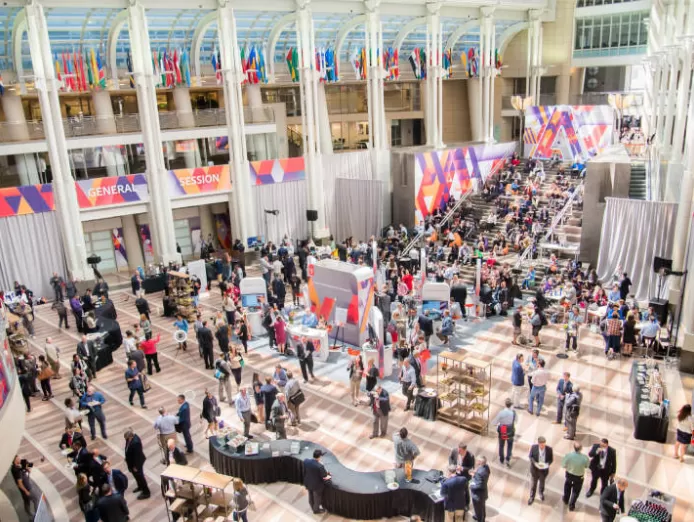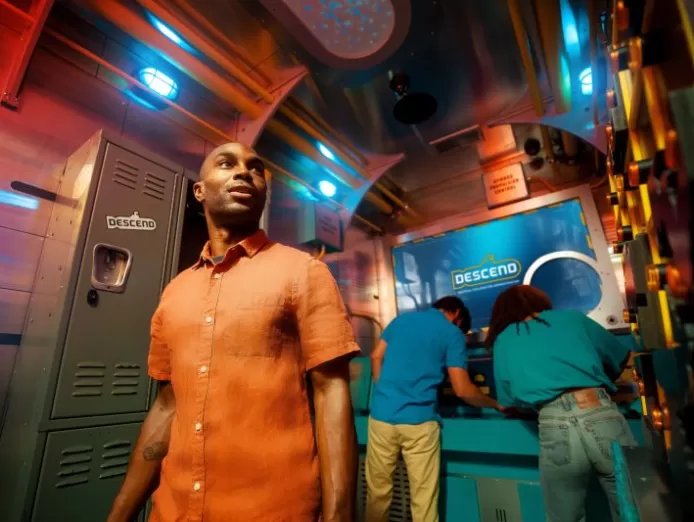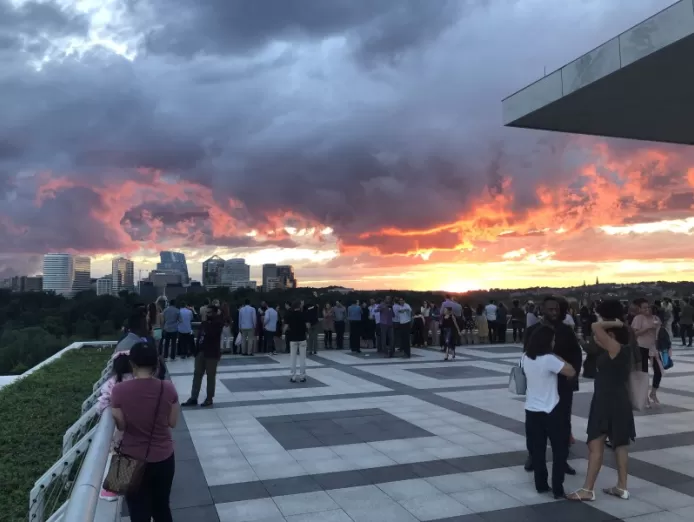“A Night at the Opera House,” on the classic design and mass construction of a performance space found throughout the world, with Laura Vasilyeva
Profs and Pints DC presents: “A Night at the Opera House,” on the classic design and mass construction of a performance space found throughout the world, with Laura Vasilyeva, associate professor of music history at Johns Hopkins University’s Peabody Institute and author of Opera and the Built Environment.
Even those who have never entered a classic Italian opera house, or teatro all’italiana, are likely to have some familiarity with its iconic look and feel. Its architectural form has been described as one of the most stable ever designed for musical performance, so successful that it was reproduced thousands of times in the 1800s alone and exists on five continents.
What is it about this building design that gives it such appeal and staying power?
Hear that question tackled by Laura Vasilyeva, a researcher of nineteenth-century Italian opera who has extensively studied the spaces where such performances are staged.
She’ll discuss the features that make the interior of opera houses—the auditoria where hundreds to thousands of audience members assemble—so memorable. We’ll look at the vast distance between their floor and decorated ceiling, the hundreds of boxes stacked around their perimeter, the darkness of their auditoria, and their rarefied atmospheres.
We’ll especially consider the red fabrics that line their walls and seats. Red initially became the color of choice for them because it was deemed best for imbuing female—and above all, white—faces with character and emotion. Its use took hold to such an extent that it is now almost unthinkable to decorate a theater in another color, to the point that even movie theaters tend to be red in honor of this model.
You’ll learn how these venues have attracted innovators who furthered their association with the deluxe and uncommon. Thomas Edison, for example, used the Teatro alla Scala in Milan to showcase networked electrical power for the first time in Europe, illuminating it with thousands of bulbs.
Professor Vasilyeva will make the case that the Italian opera house, as medium and environment, determined what it meant to listen, to watch, to feel. At the same time, even as their auditoria have felt like self-enclosed worlds, there has been no way to separate them from outside forces such as environmental catastrophes, geopolitics, and the rise and fall of empires. (Advance tickets: $13.50 plus sales tax and processing fees. Doors: $17, or $15 with a student ID. Listed time is for doors. The talk starts 30 minutes later.)
Image: The auditorium and stage of the Palais Garnier in Paris. (Photo by Naoya Ikeda / Wikimedia Commons.)





